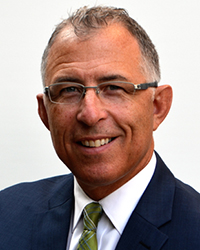Demand response and load management programs have grown much more sophisticated over the last few years as technologies improve, putting more information and actionable intelligence at the fingertips of end users.
Whether you manage the energy strategy for one location or for several sites, the strategic short-term reductions in consumption achievable through these programs can generate powerful advantages for your business in terms of sustainability and costs.
If you’re considering incorporating demand response and load management into your energy plan, here are three things you need to know to achieve energy reduction targets – and potentially uncover an entirely new revenue stream.
1. Energy efficiency and demand response are not one-in-the-same, but they do go hand-in-hand. In short, demand response programs are intended to reduce peak demand during times when wholesale market prices are high or when grid reliability is threatened. Energy efficiency measures are purely designed to save energy, cut costs, and promote environmental responsibility – at all times.
Having said that, it’s important for any consumer – regardless of size – to make connections between the supply and demand sides of their energy agreement. That’s why participating in demand response and load management programs are likely a great fit for commercial and industrial customers already engaged in efforts to improve efficiency and cut costs on the supply side of their electric bill.
2. There is demand response through ISO-New England… The regional grid operator, ISO-New England, offers commercial and industrial customers the ability to voluntarily leverage resources to help ensure grid reliability in exchange for performance incentives.
When ISO-NE calls a demand response event, enrolled customers agree to shed a minimum of 100 kW from their stand-alone load (or an aggregated load) within 30 minutes, typically for two hours. Customers receive monthly compensation just for agreeing to participate in the program – even if ISO-NE doesn’t call a peak event. If the program is activated, participants also receive an energy payment.
3.…and then there is demand response and load management through retail suppliers. Retail energy suppliers can help customers take demand response and load management initiatives one step further than the services offered by grid operators such as ISO-NE. Technology is helping expand those options, and many commercial and industrial customers are now recognizing the value of leveraging sophisticated platforms to reduce consumption during peak grid capacity and avoid inflated annual energy costs.
Many of our supplier partners, for example, deliver data-driven services to large energy users to help take the guesswork out of load management. Through peak load management services, customers can receive prompt and accurate updates on the likelihood of a critical peak, recommended load reduction start and end times, the forecasted peak load, and the day’s forecasted peak hour. These platforms essentially give customers the information they need to reduce strain on the grid while also reducing their Peak Load Contribution (PLC) value. These services have proven to be extremely reliable and accurate, saving customers in New England millions of dollars.
In New England, PLC values are determined by consumption measured once a year, during the single highest period of peak demand. The PLC value is then used to calculate capacity charges, which could be more than a third of the total bill in certain utilities. So reducing that value represents a significant cost-savings opportunity.
Managing distribution charges on your utility bill is another benefit that comes with leveraging load management platforms through suppliers. These costs are set for many large energy users based on monthly usage peaks. Data-driven tools can help consumers avoid high consumption during these periods by using real-time utility data and pre-established thresholds. Customers even have the option of letting the supplier take action on their behalf.
At the end of the day, knowing the resources that are available to you – in addition to your organizational goals and drivers – is key to making the right decision for your business. Talk with a broker like Secure Energy, which has extensive relationships with retail providers at the forefront of today’s demand response solutions. As seasoned energy professionals, we can help you understand the options, determine the right supplier, and build the best energy strategy for your business.
Jamie Collins is the senior vice president of business development for Secure Energy Solutions.







